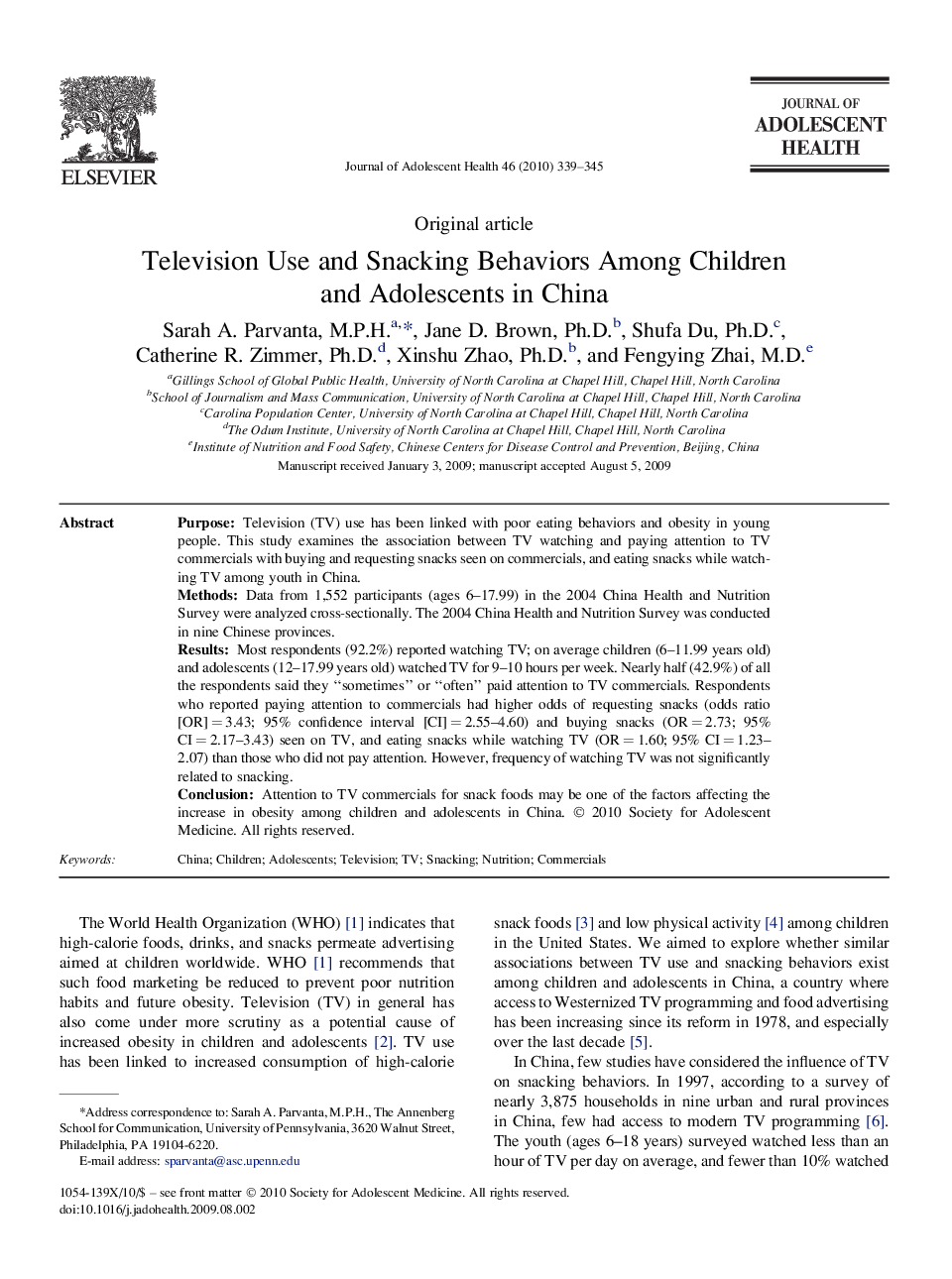| Article ID | Journal | Published Year | Pages | File Type |
|---|---|---|---|---|
| 1079906 | Journal of Adolescent Health | 2010 | 7 Pages |
PurposeTelevision (TV) use has been linked with poor eating behaviors and obesity in young people. This study examines the association between TV watching and paying attention to TV commercials with buying and requesting snacks seen on commercials, and eating snacks while watching TV among youth in China.MethodsData from 1,552 participants (ages 6–17.99) in the 2004 China Health and Nutrition Survey were analyzed cross-sectionally. The 2004 China Health and Nutrition Survey was conducted in nine Chinese provinces.ResultsMost respondents (92.2%) reported watching TV; on average children (6–11.99 years old) and adolescents (12–17.99 years old) watched TV for 9–10 hours per week. Nearly half (42.9%) of all the respondents said they “sometimes” or “often” paid attention to TV commercials. Respondents who reported paying attention to commercials had higher odds of requesting snacks (odds ratio [OR] = 3.43; 95% confidence interval [CI] = 2.55–4.60) and buying snacks (OR = 2.73; 95% CI = 2.17–3.43) seen on TV, and eating snacks while watching TV (OR = 1.60; 95% CI = 1.23–2.07) than those who did not pay attention. However, frequency of watching TV was not significantly related to snacking.ConclusionAttention to TV commercials for snack foods may be one of the factors affecting the increase in obesity among children and adolescents in China.
